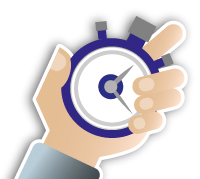 A few months ago I asked Alexandre Godvin a few questions about the KPIs of purchasing departments. He listed 4 common types of KPIs:
A few months ago I asked Alexandre Godvin a few questions about the KPIs of purchasing departments. He listed 4 common types of KPIs:
- Margin %
- Time to market, or average delay
- Supplier quality
- Social/environmental compliance
If you are just starting to set KPIs, these are good suggestions.
If you want to go more in depth, I suggest you read this month’s edition of Quality Progress. They just published an article entitled “Buying Into Quality – using quality tools to study and improve purchasing processes” and list some common KPIs.
Here are a few suggestions, straight out of their list:
Purchase requisition stage (when the purchasing department is notified of the need to purchase something)
- Number of purchase requisitions (PRs) — usually communicated by headquarters to your China procurement office.
- % of PRs that are incorrect, incomplete or require clarifications
- % of urgent PRs
About the procurement process itself
- Average lead time, % abnormal cases with long lead times
- Cost of the procurement process itself (can be per $1000 purchased)
- Quality of the procurement process (% rejected during approval process, number of issues uncovered by audits)
- Supplier base management (number of suppliers selling more than 80% in their category, number of suppliers per employee)
- Workload (number of PRs per purchaser, USD spent by purchaser, % of procurement done through blanket orders)
Results of the process
- % savings generated
- % delays, % stock-outs
- % cost overruns
- Number of quality problems flagged by incoming QC
Ratings from ‘internal customers’ and other stakeholders
- Internal customer ratings, comments, complaints
- Supplier comments and complaints
—
Many of these KPIs will be communicated to the China procurement office. Ideally your company has an ERP in place and many of these data can be extracted easily.
One piece of advice… Don’t try to track 30 KPIs for 1 process. It will be difficult to get the information, and the employees will have no idea about their priorities. Generally, below 8 KPIs is good.
What do you think?

Normally, these local buying office’s KPI should be cascade from global procurement KPI who link up to company strategy.
It covering:
SQDCP
S: Safety — Safety is the top priority including working environment, travelling…etc.
Q: Quality — it will breakdown to more KPIs, such as, No. of customer complaint, outgoing lot reject Rate, outgoing Defect Rate, supplier compliance in Quality and safety
D: on time delivery (ETA)
C: Cost saving
P: People development, People pulse
Breakdown each section depends on own needs.